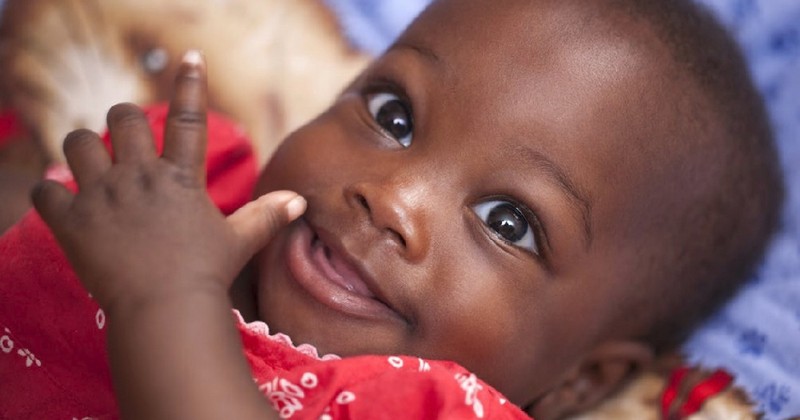The 4 stages of language development

We review the process of language learning during the first months of infants' lives.
The acquisition of language comprehension and expression skills is a cumulative process that begins with the birth of the baby. As soon as the baby enters the world, he begins to hear phonemes and identify verbal structures that he will gradually acquire in order to communicate with those around him and thus meet his needs.
In this article we will describe the stages of language development in young childrenThe first undifferentiated vocalizations to the acquisition of the complex components of speech that in the long term will allow the improvement of the communicative capacities.
The stages of language development
The main stages of language evolution are as follows:
1. The preverbal or pre-linguistic period
At the beginning of life, babies emit sounds that are increasingly communicative and close to language. Maternal or maternal speech, characterized by a slower rhythm, frequent repetitionsfrequent repetitions, shorter sentences, grammatical simplification and clear pronunciation, can be helpful in the progressive development of the infant's linguistic comprehension.
Preverbal interactions between the infant and others are termed protoconversations because they are similar in structure to dialogues. This language antecedent is complemented by nonverbal responses such as manual gestures or facial expressions.
Among the prelinguistic signs, the "protos" stand out. Proto-imperative signs appear around nine months of age.the baby points to an object to indicate to another person that he wants it. We speak of protodeclaratives, which develop at twelve months, when a similar gesture is intended to draw the adult's attention to something.
In the first year of life, babies' sounds progress from the first reflex vocalizations, such as grunts and cries, to cooing (consonants, vowels or simple combinations such as "gu") and babbling, consisting of the production of syllabic strings.These are initially repeated, but later different syllables are combined.
The first words appear at approximately twelve months of life. At this time, babies tend to omit and replace phonemes, as well as to bring the pronunciation of two successive consonants closer together to facilitate pronunciation; this is known as "assimilation".
2. The holophrasal period
The term "holophrase" is used to refer to sentences consisting of a single word. sentences consisting of a single wordThe holophrasal period is the second stage of language development. During the holophrasal period, words fulfill functions that will later correspond to sentences.
The meaning of holophrases depends to a large extent on the context in which they are uttered and on nonverbal language. in which they are uttered and on nonverbal language. Thus, if a baby says "bibe" he is probably asking to be given a bottle, but if he points to it he may mean "This is a bottle", for example.
The holophrase will form the core of linguistic development: despite the lack of grammaticality of these constructions, their appearance indicates that the infant understands that verbalizations are basically intended to convey a particular meaning to other people.
Infants usually reach the holophrasal period when they are about one year old. Later on, their vocabulary their vocabulary will increase rapidly and intensively. and little by little they will begin to combine different words.
3. The first word combinations
The holophrastic period ends shortly before the age of two. At this age, the baby's vocabulary has become very complex, so that he or she is already able to combine words and, therefore, meanings.. Thus subjects and predicates appear explicitly for the first time, although it is not yet clear that the infant distinguishes between categories of words.
Between the ages of two and three, children begin to combine three or more words on a regular basis and produce surprisingly rich sentences. They also learn to use different intonations that allow them to use the interrogative mode, for example.
The first word combinations are known as "telegraphic speech". because the little ones ignore the less informative components of sentences, such as determiners and conjunctions, giving priority to verbs and nouns; the latter make up the bulk of the words learned during this stage of linguistic explosion.
4. Advanced language development
In the period between approximately 16 months and 4 years of age, children's vocabulary increases exponentially. By this age, their linguistic their linguistic capacity begins to progressively approach that of adults. but it will take several years before both vocabulary and grammar are perfected.
There is a dissociation between language comprehension and language production. In particular, young children are able to understand complex sentences that they will not be able to generate on their own until more than two months later.
There are two types of errors that are very common during language acquisition: overextensions and underextensions.. Overextensions are generalizations that consist of using a word to designate other objects, such as calling all mammals "dog"; underextensions or undergeneralizations are the opposite of these errors.
As the little ones grow up, different milestones take place that will be fundamental for the development of adult language. Among others, the identification of irregular forms, the acquisition of verbal modes and the progress of metalinguistic and metacognitive knowledge are of great importance.
(Updated at Apr 13 / 2024)